PSCO这么查低硫油
对于未来,对于不确定,人类往往是担忧的,这种担忧的根源,源于对自身不足的焦虑。当然也有一些推手,在背后四处的渲染。
这段时间业内最热的话题,无疑是低硫油!
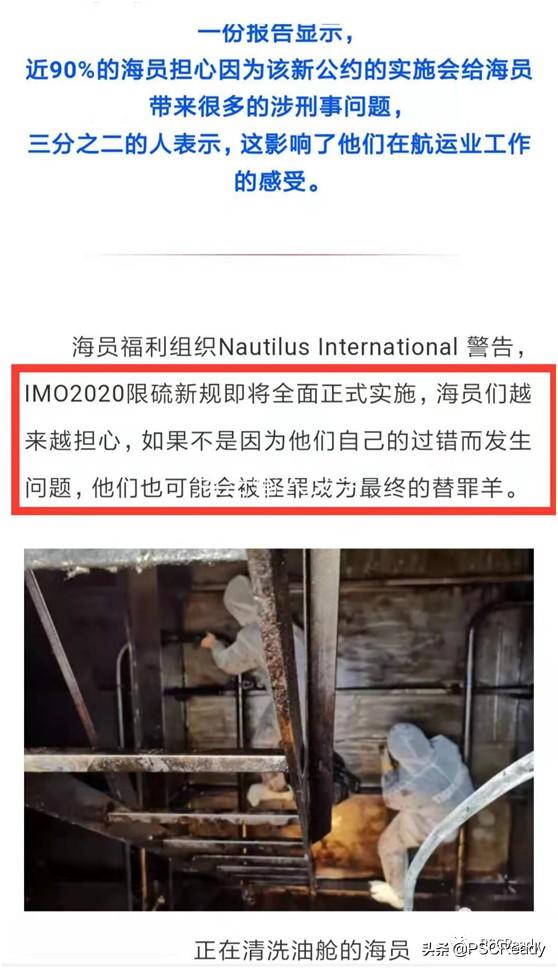
这种担忧有必要么?
PSCReady(微信公众号:PSCReady)觉得,完全没必要!
天塌下来砸的是船东,作为船员我们只要完成了职责内的内容,为何做这些杞人忧天的讨论呢?
毫无意义!
对于低硫油,船员要做哪些内容?
技术上的细节,PSCReady(微信公众号:PSCReady)不敢聊,因为还没大规模使用,会出现什么问题,我们不好猜测,但是PSC怎么检查,我们是知道的,本期我们针对这个话题,聊聊PSC怎么查,应该做好哪些迎检工作,以不变应万变的精髓在于“不变”。掌握必要的检查点,是我们应该提前准备的,而不是忧虑不可预测的万变!
IMO在2019年5月1日,通过了RESOLUTION MEPC.321(74),这份导则彻底的解决了低硫油的港口监督问题,在这份决议里规定了PSCO应该检查什么,哪些需要详细检查,如何处理缺陷。内容是英文的,PSCReady(微信公众号:PSCReady)去粗取精,大致介绍下,需要研究细节的,各位自己看原文。
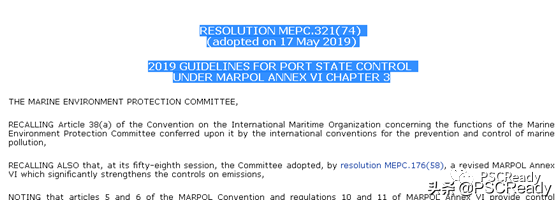
PSCO初始检查阶段大致会对六个方面的内容进行核查:
1.核查IAPP证书,确定船舶是否安装了废气滤清系统,同时核对IAPP证书各个项目是否填写正确,比如:2000.1.1-2010.12.31装船的130KW以上的柴油机,IAPP证书上要勾选tier I,2011.1.1之后,装船的要勾选tier II。同时,可以要求船长出示柴油机的技术资料,核查technical files是否是原件,是否被船级社认可过,这套证书的原件要长久保持在船,同时检查设备备件的更换是否使用了认可的备件,是否做好了记录,日本的PSCO开具过这种缺陷,参见:小日本滞留新趋势,业界需抓紧自查
2.一旦IAPP证书显示船舶装设了废气处理系统(脱硫塔),要查看有无批准文件,确定这套设备是开式、闭式或者混合式,如果是开式,就要注意了,有的国家,比如我国、新加坡、印度是禁止排放洗涤水的,这意味着港内不可用。下图中的国家对开式脱硫塔都是禁止使用的。

3.上面的内容核查完毕后,继续检查脱硫塔使用记录。
4.加油单(BDN)、燃油的MSDS和油类记录薄,这两个材料的内容要一致,有的PSCO还会要求出示船上保存的油样,各位老轨也要注意,每次加油后保存好油样。
5.确定船上的燃油不可获得报告(FONAR)是否记录合适。
6.确定换油程序和换油记录是否合适,船员是否明白。
如果PSCO发现初始检查阶段发现缺陷,可以开展详细检查,详细检查也是扩大检查,扩大检查的范围则包括了,船上的燃油取样化验、焚烧炉使用是否正常,是否燃烧了不可烧的垃圾,脱硫塔的使用是否合理,操作是否正常,运行是否正常,一般会对人员操作熟练程度进行核查。
PSCO检查完毕,则是开具缺陷和判定,可以滞留的情况包括:
1. IAPP 、EIAPP证书过期;
2. 硫含量超标;
3. 脱硫塔没有经过认证;
4. 在ECA区,没有使用合规燃油,换油程序不合格;
5. 船员不熟悉操作程序;
6. 设备故障。
从整个RESOLUTION MEPC.321(74)的内容看,大致还是延续了PSC的常规检查项目,需要的朋友可以自己阅读原文,PSCReady(微信公众号:PSCReady)仅仅做了一个大致介绍,各位自取。
(向上滑动查看内容)
2019 GUIDELINES FOR PORT STATE CONTROL
UNDER MARPOL ANNEX VI CHAPTER 3
Chapter 1 GENERAL
1.1 This document is intended to provide basic guidance on the conduct of port State control inspections for compliance with MARPOL Annex VI (hereinafter referred to as "the Annex") and afford consistency in the conduct of these inspections, the recognition of deficiencies and the application of control procedures.
1.2 Chapters 1 (General), 4 (Contravention and detention), 5 (Reporting requirements) and 6 (Review procedures) of the Procedures for Port State Control, as adopted by the Organization, as may be amended, also applies to these Guidelines.
Chapter 2 INSPECTIONS OF SHIPS REQUIRED TO CARRY THE IAPP CERTIFICATE
2.1 Initial inspections
2.1.1 The PSCO should ascertain the date of ship construction and the date of installation of equipment on board which are subject to the provisions of the Annex, in order to confirm which regulations of the Annex are applicable.
2.1.2 On boarding and introduction to the master or responsible ship's officer, the port State control officer (PSCO) should examine the following documents, where applicable:
.1 the International Air Pollution Prevention Certificate (IAPP Certificate) (regulation VI/6), including its Supplement;
.2 the Engine International Air Pollution Prevention Certificate (EIAPP Certificate) (paragraph 2.2 of the NOX Technical Code) including its Supplement, for each applicable marine diesel engine;
.3 the Technical File (paragraph 2.3.4 of the NOX Technical Code) for each applicable marine diesel engine;
.4 depending on the method used for demonstrating NOX compliance for each applicable marine diesel engine:
.1 the Record Book of Engine Parameters for each marine diesel engine (paragraph 6.2.2.7 of the NOX Technical Code) demonstrating compliance with regulation VI/13 by means of the marine diesel engine parameter check method; or
.2 documentation relating to the simplified measurement method; or
.3 documentation related to the direct measurement and monitoring method;
.5 for a ship to which regulation VI/13.5.1 applies for a particular NOX Tier III emission control area and that has one or more installed marine diesel engines certified to both Tier II and Tier III or which has one or more marine diesel engines certified to Tier II only1 that there are the required log book and the recordings for the tier and on/off status of those marine diesel engines while the ship is within an applicable NOX Tier III emission control area;Unified Interpretation to regulation 13.5.3 set out in MEPC.1/Circ.795/Rev.4.
.6 the Approved Method File (regulation VI/13.7);
.7 the written procedures covering fuel oil change over operations (in a working language or languages understood by the crew) where separate fuel oils are used in order to achieve compliance (regulation VI/14.6);
.8 the approved documentation relating to exceptions and/or exemptions granted under regulation VI/3;
.9 the approved documentation (SECC where issued, ETM, OMM, SECP) and relating to any installed Exhaust Gas Cleaning System (EGCS) or equivalent means, to reduce SOX emissions (regulation VI/4);
.10 that the required EGCS monitoring records have been retained and show compliance. Additionally, that the EGCS Record Book including nitrate discharge data and performance records,2 or approved alternative, has been duly maintained;
2In assessing the Emission Ratio and discharge water records the PSCO should be mindful that such factors as transient engine operation or analyser performance outputs may result in isolated "spikes" in the recorded output which, while these measurements in themselves may be above the required Emission Ratio or discharge water limit values, do not indicate that overall the EGCS was not being operated and controlled as required and hence should not be taken as evidence of non-compliance with the requirements.
.11 the bunker delivery notes (BDNs) and representative samples or records thereof (regulation VI/18);
.12 the copy of the type approval certificate of applicable shipboard incinerator (resolutions MEPC.76(40) or MEPC.244(66));
.13 the Ozone Depleting Substances Record Book (regulation VI/12.6);
.14 the VOC Management Plan (regulation VI/15.6);
.15 any notification to the ship's flag Administration issued by the master or officer in charge of the bunker operation together with any available commercial documentation relevant to non-compliant bunker delivery, regulation VI/18.2; and
.16 if the ship has not been able to obtain compliant fuel oil, the notification to the ships flag Administration and the competent authority of the relevant port of destination as set out in the appendix.
The Record Books referenced in sub-paragraphs .1, .5, .10 and 13 above may be presented in an electronic format. A declaration from the Administration should be viewed in order to accept this Electronic Record Book. If a declaration cannot be provided, a hard copy Record Book will need to be presented for examination.
2.1.3 As a preliminary check, the IAPP Certificate's validity should be confirmed by verifying that the Certificate is properly completed and signed and that required surveys have been performed.
2.1.4 Through examining the Supplement to the IAPP Certificate, the PSCO may establish how the ship is equipped for the prevention of air pollution.
2.1.5 In the case where the bunker delivery note or the representative sample as required by regulation VI/18 presented to the ship are not in compliance with the relevant requirements (the BDN is set out in appendix V of MARPOL Annex VI), the master or officer in charge of the bunker operation may have documented that through a Notification to the ships flag Administration with copies to the port authority under whose jurisdiction the ship did not receive the required documentation pursuant to the bunkering operation and to the bunker deliverer.
2.1.6 In addition, if the BDN shows compliant fuel, but the master has independent test results of the fuel oil sample taken by the ship during the bunkering which indicates non-compliance, the master may have documented that through a Notification to the shipʹs flag Administration with copies to the competent authority of the relevant port of destination, the Administration under whose jurisdiction the bunker deliverer is located and to the bunker deliverer.
2.1.7 In all cases, a copy may be retained on board the ship, together with any available commercial documentation, for the subsequent scrutiny of port State control.
2.2 Initial inspection on ships equipped with equivalent means of SOX compliance.
2.2.1 On ships equipped with equivalent means of compliance, the PSCO will look at:
.1 evidence that the ship has received an appropriate approval for any installed equivalent means (approved, under trial or being commissioned);
.2 evidence that the ship is using an equivalent means, as identified on the Supplement of the IAPP certificate, for fuel oil combustion units on board or that compliant fuel oil is used in equipment not so covered; and
.3 BDNs on board3 which indicate that the fuel oil is intended to be used in combination with an equivalent means of SOX compliance or the ship is subject to a relevant exemption to conduct trials for SOX emission reduction and control technology research.
3 Resolution MEPC.305(73) Prohibition on the carriage of non-compliant fuel oil for combustion purposes for propulsion or operation on board a ship is not applicable to fuel oil carried as cargo or for ships fitted with an approved equivalent means of compliance.
2.2.2 In the case where an EGCS is not in compliance with the relevant requirements for other than transitory periods and isolated spikes in the recorded output, the master or officer in charge may have documented that through a Notification to the ship's flag Administration with copies to the competent authority of the relevant port of destination, and present those corrective actions taken in order to rectify the situation in accordance with the guidance given in the EGCS Technical Manual. If a malfunction occurs in the instrumentation for the monitoring of emission to air or the monitoring of washwater discharge to sea, the ship may have alternative documentation demonstrating compliance.4
4MEPC.1/Circ.883 on Guidance on indication of ongoing compliance in the case of the failure of a single monitoring instrument, and recommended actions to take if the Exhaust Gas Cleaning Systems (EGCS) fails to meet the provisions of the 2015 EGCS Guidelines (resolution MEPC.259(68)), ships should have documented notification of system non-compliance to relevant authorities as in paragraph 2.2.2.
2.3 Initial inspection within an ECA
2.3.1 When a ship is inspected in a port in an ECA designated for SOX emission control, the PSCO should look at:
.1 evidence of fuel oil delivered to and used on board with a sulphur content of not more than 0.10% m/m through the BDNs and appropriate onboard records including records of bunkering operations as set out in the Oil Record Book Part 1 (regulation VI/18.5 and VI/14.4); and
.2 for those ships using separate fuel oils for compliance with regulation VI/14, evidence of a written procedure (in a working language or languages understood by the crew) and records of changeover to fuel oil with a sulphur content of not more than 0.10% m/m before entering the ECA such that compliant fuel was being used while sailing in the entire ECA as required in regulation VI/14.6.
2.3.2 When a ship to which regulation VI/13.5.1 applies for a particular NOX Tier III emission control area is inspected in a port in that area, the PSCO should look at:
.1 the records in respect of the tier and on/off status, together with any changes to that status while within that NOX Tier III emission control area, which are to be logged as required by regulation VI/13.5.3 in respect of an installed marine diesel engine certified to both Tier II and Tier III or which is certified to Tier II only5; and
5 Unified Interpretation to regulation 13.5.3 set out in MEPC.1/Circ.795/Rev.4.
.2 the status of an installed marine diesel engine which is certified to both Tier II and Tier III showing that that engine was operating in its Tier III condition on entry into that NOX Tier III emission control area and that status was maintained at all times while that marine diesel engine was in operation within that area; or
.3 the records related to the conditions associated with an exemption granted under regulation VI/13.5.4 have been logged as required by that exemption and that the terms and duration of that exemption have been complied with as required.
2.4 Initial inspection outside an ECA or first port after transiting an ECA
2.4.1 When a ship is inspected in a port outside ECA the PSCO will look to the same documentation and evidence as during inspections in ports inside the ECA. The PSCO should in particular look at:
.1 evidence that the sulphur content of the fuel oil is in accordance with regulation VI/14.16 through the BDNs and appropriate onboard records including records of bunkering operations as set out in the Oil Record Book Part 1 (regulation VI/18.5 and VI/14.4); and
Resolution MEPC.305(73) Prohibition on the carriage of non-compliant fuel oil for combustion purposes for propulsion or operation on board a ship is not applicable to fuel oil carried as cargo or for ships fitted with an approved equivalent means of compliance.
.2 evidence of a written procedure (in a working language or languages understood by the crew) and records of changeover from fuel oil with a sulphur content of not more than 0.10% m/m after leaving the ECA such that compliant fuel was being used while sailing in the in the entire ECA.
2.4.2 When a ship to which regulation VI/13.5.1 applies for a particular NOX Tier III emission control area is inspected in a port outside that area, the PSCO should look at the records required by 2.3.2.1 and 2.3.2.2 or 2.3.2.3 to ensure that the relevant requirements were complied with for the whole period of time the ship was operating in that area.
2.5 Outcome of initial inspection
2.5.1 If the certificates and documents are valid and appropriate and, after an inspection of the ship to check that the overall condition of the ship meets generally accepted international rules and standards, the PSCO's general impressions and observations on board confirm a good standard of maintenance, the inspection should be considered satisfactorily concluded.
2.5.2 If, however, the PSCO's general impressions or observations on board give clear grounds (see paragraph 2.5.3) for believing that the condition of the ship or its equipment do not correspond substantially with the particulars of the certificates or the documents, the PSCO should proceed to a more detailed inspection.
2.5.3 "Clear grounds" to conduct a more detailed inspection include:
.1 evidence that certificates required by the Annex are missing or clearly invalid;
.2 evidence that documents required by the Annex are missing or clearly invalid;
.3 the absence or malfunctioning of equipment or arrangements specified in the certificates or documents;
.4 the presence of equipment or arrangements not specified in the certificates or documents;
.5 evidence from the PSCO's general impressions or observations that serious deficiencies exist in the equipment or arrangements specified in the certificates or documents;
.6 information or evidence that the master or crew are not familiar with essential shipboard operations relating to the prevention of air pollution, or that such operations have not been carried out;
.7 evidence of inconsistency between information in the bunker delivery note and paragraph 2.3 of the Supplement to the IAPP certificate;
.8 evidence that an equivalent means has not been used as required; or
.9 evidence, for example by fuel calculators, that the quantity of bunkered compliant fuel oil is inconsistent with the ship's voyage plan; and
.10 receipt of a report or complaint containing information that the ship appears to be non-compliant including but not limited to information from remote sensing surveillance of SOX emissions or portable fuel oil sulphur content measurement devices indicating that a ship appears to use non-compliant fuel while in operation/underway;
.11 evidence that the tier and/or on/off status of applicable installed marine diesel engines has not been maintained correctly or as required;
.12 receipt of a report or complaint containing information that one or more of the installed marine diesel engines has not been operated in accordance with the provisions of the respective Technical File or the requirements relevant to a particular NOX Tier III emission control area; and
.13 receipt of a report or complaint containing information that the conditions attached to an exemption granted under regulation VI/13.5.4 have not been complied with.
2.6 More detailed inspections
2.6.1 The PSCO should verify that:
.1 there are effectively implemented maintenance procedures for the equipment containing ozone-depleting substances; and
.2 there are no deliberate emissions of ozone-depleting substances.
2.6.2 In order to verify that each installed marine diesel engine with a power output of more than 130 kW is approved by the Administration in accordance with the NOX Technical Code and maintained appropriately, the PSCO should pay particular attention to the following:
.1 examine such marine diesel engines to be consistent with the EIAPP Certificate and its Supplement, Technical File and, if applicable, Record Book of Engine Parameters or Onboard Monitoring Manual and related data;
.2 examine marine diesel engines specified in the Technical Files to verify that no unapproved modifications, which may affect NOX emission, have been made to the marine diesel engines;
.3 in the case of an installed marine diesel engine certified to Tier III that the required records, if applicable, in accordance with regulation VI/13.5.3 or in the Technical File, including those required by 2.3.6 of the NOX Technical Code, have been maintained as necessary and that the marine diesel engine, including any NOX control device and associated ancillary systems and equipment, including, where fitted, bypass arrangements, is maintained in accordance with the associated Technical File and is in good order;
.4 if applicable, examine whether the conditions attached to an exemption granted under regulation VI/13.5.4 have been complied with as required;
.5 examine marine diesel engines with a power output of more than 5,000 kW and a per cylinder displacement at or above 90 litres installed on a ship constructed on or after 1 January 1990 but prior to 1 January 2000 to verify that they are certified, if so required, in accordance with regulation VI/13.7;
.6 in the case of ships constructed before 1 January 2000, verify that any marine diesel engine which has been subject to a major conversion, as defined in regulation VI/13, has been approved by the Administration; and
.7 emergency marine diesel engines intended to be used solely in case of emergency are still in use for this purpose.
2.6.3 The PSCO should check and verify whether fuel oil complies with the provisions of regulation VI/14 taking into account appendix VI7 of this Annex.
7Amendments to MARPOL VI, Appendix VI, Verification procedures for a MARPOL Annex VI fuel oil sample (regulation 18.8.2 or regulation 14.8), expected to be adopted in Spring 2020 and set out in annex 13 to document MEPC 74/18/Add.1.
2.6.4 The PSCO should pay attention to the record required in regulation VI/14.6 in order to identify the sulphur content of fuel oil used by the ship depending on the area of trade, or that other equivalent approved means have been applied as required. The fuel oil consumed in and outside the ECA, and that there is enough fuel in compliance with regulation VI/14 to reach the next port destination.
2.6.5 Where EGCS is used, the PSCO should check that it has been installed and operated, together with its monitoring systems, in accordance with the associated approved documentation according to the survey procedures as established in the OMM.
2.6.6 If the ship is equipped with an EGCS as an equivalent means of SOX compliance, the PSCO should verify that the system is properly functioning, is in operation, there are continuous-monitoring systems with tamper-proof data recording and processing devices,8 if applicable and the records demonstrate the necessary compliance when set against the limits given in the approved documentation and applies to relevant fuel combustion units on board. Checking can include but is not limited to: emissions ratio, pH, PAH, turbidity readings as limit values given in ETM-A or ETM-B and operation parameters as listed in the system documentation.
8 Equivalent emission values for emission abatement methods are 4.3 and 21.7 SO2 (ppm)/CO2 (% v/v) for marine fuels with a sulphur content of 0.10 and 0.50 (% m/m) respectively.
2.6.7 If the ship is a tanker, as defined in regulation VI/2.21, the PSCO should verify that the vapour collection system approved by the Administration, taking into account MSC/Circ.585, is installed, if required under regulation VI/15.
2.6.8 If the ship is a tanker carrying crude oil, the PSCO should verify that there is on board an approved VOC Management Plan.
2.6.9 The PSCO should verify that prohibited materials are not incinerated.
2.6.10 The PSCO should verify that shipboard incineration of sewage sludge or sludge oil in boilers or marine power plants is not undertaken while the ship is inside ports, harbours or estuaries (regulation VI/16.4).
2.6.11 The PSCO should verify that the shipboard incinerator, if required by regulation VI/16.6.1, is approved by the Administration. For these units, it should be verified that the incinerator is properly maintained, therefore the PSCO should examine whether:
.1 the shipboard incinerator is consistent with the certificate of shipboard incinerator;
.2 the operational manual, in order to operate the shipboard incinerator within the limits provided in appendix IV to the Annex, is provided; and
.3 the combustion chamber flue gas outlet temperature is monitored at all times the unit is in operation (regulation VI/16.9).
2.6.12 If there are clear grounds as defined in paragraph 2.5.3, the PSCO may examine operational procedures by confirming that:
.1 the master or crew are familiar with the procedures to prevent emissions of ozone-depleting substances;
.2 the master or crew are familiar with the proper operation and maintenance of marine diesel engines, in accordance with their Technical Files or Approved Method file, as applicable, and with due regard for Emission Control Areas for NOX control;
.3 the master or crew are familiar with fuel oil bunkering procedures in connection to the respective bunker delivery notes and onboard records including the Oil Record Book Part 1 (regulation VI/18.5 and VI/14.4) and retained samples as required by regulation VI/18;
.4 the master or crew are familiar with the correct operation of an EGCS or other equivalent means on board together with any applicable monitoring and recording, and record keeping requirements;
.5 the master or crew are familiar and have undertaken the necessary fuel oil changeover procedures, or equivalent, associated with demonstrating compliance within an Emission Control Area;
.6 the master or crew are familiar with the garbage screening procedure to ensure that prohibited garbage is not incinerated;
.7 the master or crew are familiar with the operation of the shipboard incinerator, as required by regulation VI/16.6, within the limits provided in appendix IV to the Annex, in accordance with its operational manual;
.8 the master or crew are familiar with the regulation of emissions of VOCs, when the ship is in ports or terminals under the jurisdiction of a Party to the 1997 Protocol to MARPOL 73/78 in which VOCs emissions are to be regulated, and are familiar with the proper operation of a vapour collection system approved by the Administration (in case the ship is a tanker as defined in regulation VI/2.21); and
.9 the master or crew are familiar with the application of the VOC Management Plan, if applicable.
2.7 Detainable deficiencies
2.7.1 In exercising his/her functions, the PSCO should use professional judgment to determine whether to detain the ship until any noted deficiencies are corrected or to allow it to sail with certain deficiencies which do not pose an unreasonable threat of harm under the scope of the Annex provided they will be timely addressed. In doing this, the PSCO should be guided by the principle that the requirements contained in the Annex, with respect to the construction, equipment and operation of the ship, are essential for the protection of the marine environment, the navigational safety or the human health and that departure from these requirements could constitute an unreasonable threat of harm to the mentioned protection aspects and should be avoided.
2.7.2 In order to assist the PSCO in the use of these Guidelines, there follows a list of deficiencies, which are considered, taking into account the provisions of regulation VI/3, to be of such a serious nature that they may warrant the detention of the ship involved:
.1 absence of valid IAPP Certificate, EIAPP Certificates or Technical Files, if applicable;
.2 a marine diesel engine, with a power output of more than 130 kW, which is installed on board a ship constructed on or after 1 January 2000, or a marine diesel engine having undergone a major conversion on or after 1 January 2000, which does not conform to its Technical File, or where the required records have not been maintained as necessary or where it has not met the applicable requirements of the particular NOX Tier III emission control area in which it is operating;
.3 a marine diesel engine, with a power output of more than 5,000 kW and a per cylinder displacement at or above 90 litres, which is installed on board a ship constructed on or after 1 January 1990 but prior to 1 January 2000, and an approved method for that engine has been certified by an Administration and was commercially available, for which an approved method is not installed after the first renewal survey specified in regulation VI/13.7.2;
.4 on ships not equipped with equivalent means of SOX compliance, based on the methodology of sample analysis in accordance with appendix VI9 of MARPOL Annex VI, the sulphur content of any fuel oil being used or carried for use on board exceeds the applicable limit required by regulation VI/14. If the master claims that it was not possible to bunker compliant fuel oil, the PSCO should take into account the provisions of regulation VI/18.2 (see the appendix).
9 Amendments to MARPOL VI, appendix VI, Verification procedures for a MARPOL Annex VI fuel oil sample (regulation 18.8.2 or regulation 14.8), expected to be adopted in Spring 2020 and set out in annex13 to document MEPC 74/18/Add.1.
.5 on ships equipped with equivalent means of SOX compliance, absence of an appropriate approval for the equivalent means, which applies to relevant fuel combustion units on board. With regard to combustion units not connected to an EGCS, the sulphur content of any fuel oil being used on these combustion units exceeds the limits stipulated in regulation VI/14, taking into account the provisions of regulation VI/18.2 (see the appendix).
.6 non-compliance with the relevant requirements while operating within an Emission Control Area for SOX and particulate matter control;
.7 an incinerator installed on board the ship on or after 1 January 2000 does not comply with requirements contained in appendix IV to the Annex, or the standard specifications for shipboard incinerators developed by the Organization;and
.8 the master or crew are not familiar with essential procedures regarding the operation of air pollution prevention equipment as defined in paragraph 2.5.12 above.
Chapter 3 INSPECTIONS OF SHIPS OF NON-PARTIES TO THE ANNEX AND OTHER SHIPS NOT REQUIRED TO CARRY THE IAPP CERTIFICATE
3.1 As this category of ships is not provided with the IAPP Certificate, the PSCO should judge whether the condition of the ship and its equipment satisfies the requirements set out in the Annex. In this respect, the PSCO should take into account that, in accordance with article 5(4) of the MARPOL Convention, no more favourable treatment is to be given to ships of non-Parties.
3.2 In all other respects the PSCO should be guided by the procedures for ships referred to in chapter 2 and should be satisfied that the ship and crew do not present a danger to those on board or an unreasonable threat of harm to the marine environment.
3.3 If the ship has a form of certification other than the IAPP Certificate, the PSCO may take such documentation into account in the evaluation of the ship.
APPENDIX
NON-AVAILABILITY OF COMPLIANT FUEL OIL CLAIMED
In case non-availability of compliant fuel oil is claimed the master/owner must present a record of actions taken to attempt to bunker compliant fuel oil and provide evidence:
.1 of attempts to purchase compliant fuel oil in accordance with its voyage plan;
.2 if the fuel oil was not made available where expected, that attempts were made to locate alternative sources for such fuel oil; and
.3 that despite best efforts to obtain compliant fuel oil no such fuel oil was made available for purchase.
Best efforts to procure compliant fuel oil include, but are not limited to, investigating alternative sources of fuel oil prior to commencing the voyage or en route.
The ship should not be required to deviate from its intended voyage or to unduly delay the voyage in order to achieve compliance.
If the ship provides the information, as above, the port State should take into account all relevant circumstances and the evidence presented to determine the appropriate action to take, including not taking control measures.
The master/owner may provide evidence as below to support their claim (not exhaustive):
.1 a copy (or description) of the ship's voyage plan, including the ship's port of origin and port of destination;
.2 the time the ship first received notice it would be conducting a voyage involving transit/arrival in the port and the ship's location when it first received such notice;
.3 a description of the actions taken to attempt to achieve compliance, including a description of all attempts that were made to locate alternative sources of compliant fuel oil, and a description of the reason why compliant fuel was not available (e.g. compliant fuel oil was not available at ports on the "intended voyage", fuel oil supply disruptions at port, etc.);
.4 the cost of compliant fuel is not considered to be a valid basis for claiming non-availability of fuel;
.5 include names and addresses of the fuel oil suppliers contacted and the dates on which contact was made;
.6 in cases of fuel oil supply disruption, the name of the port at which the ship was scheduled to receive compliant fuel oil and the name of the fuel supplier that is reporting the non-availability of compliant fuel oil;
.7 the availability of compliant fuel oil at the next port-of-call and plans to obtain that fuel oil; and
.8 if applicable, identify and describe any operational constraints that prevented use of compliant fuel oil, e.g. with respect to viscosity or other fuel oil parameters.
If, despite best efforts, it was not possible to procure compliant fuel oil the master/owner must notify the port State control authorities in the port of arrival and the flag Administration (regulation VI/18.2.4).

PSCReady公众号系航运业资深原创作者,致力于船检信息探讨,注册验船师考试辅导,港口国迎检信息发布,提供一手信息资源。
1. 原创辛苦,各平台和网站,未经允许,拒绝转载!
2. 欢迎投稿、爆料,内容请聚焦PSC迎检:[email protected]
3. 添加小编:safety4sea,注明职业,邀请入群。

记得帮点“在看”。 另外,把公号加星标,新文章才不会漏





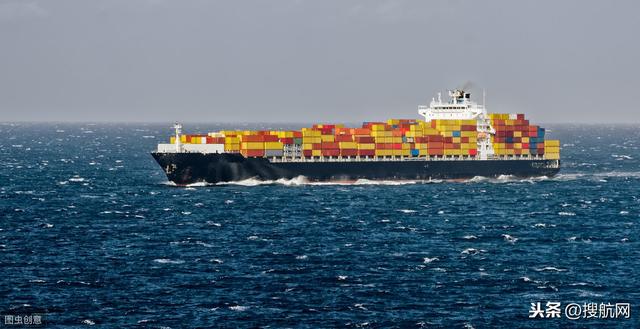
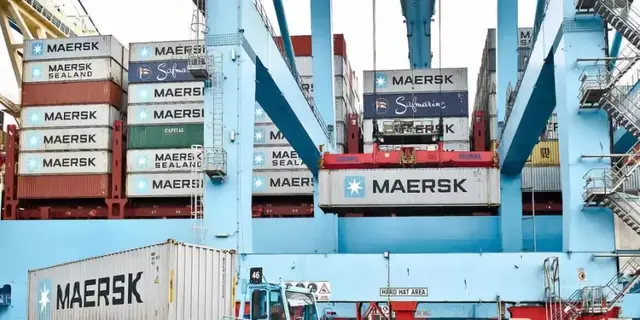
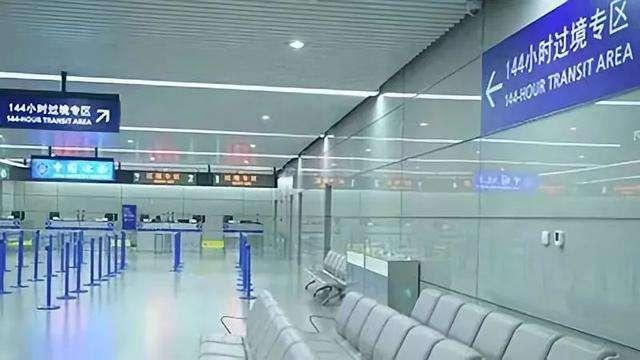
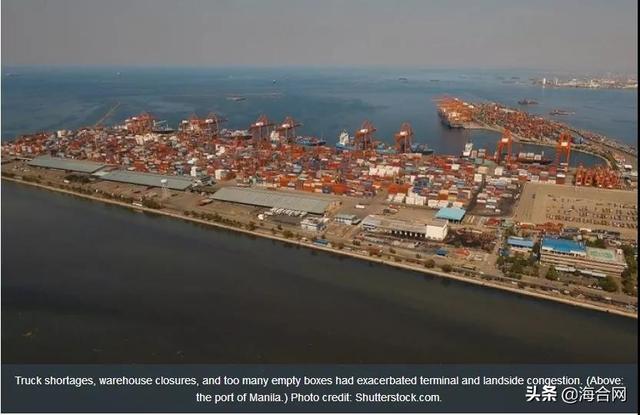





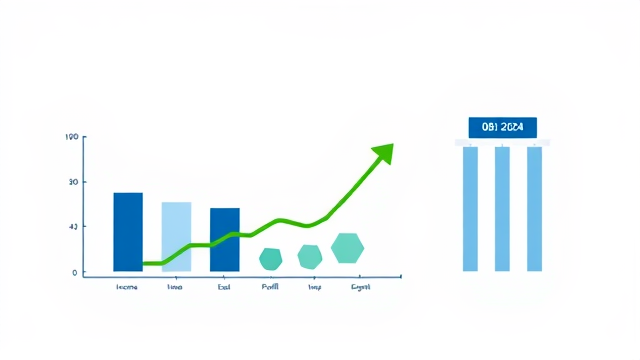
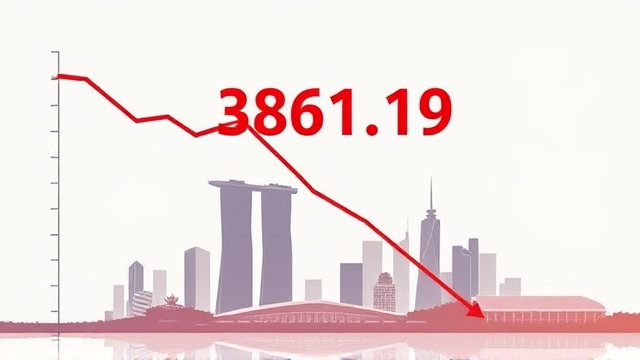




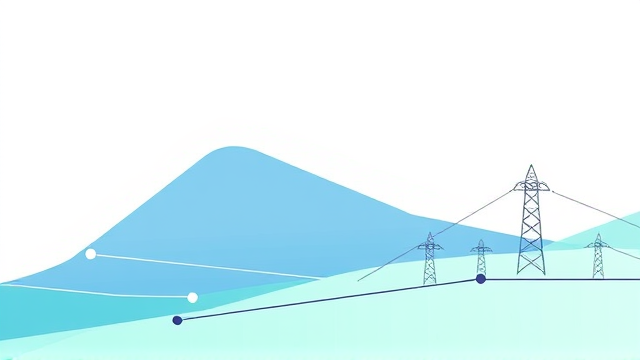
评论